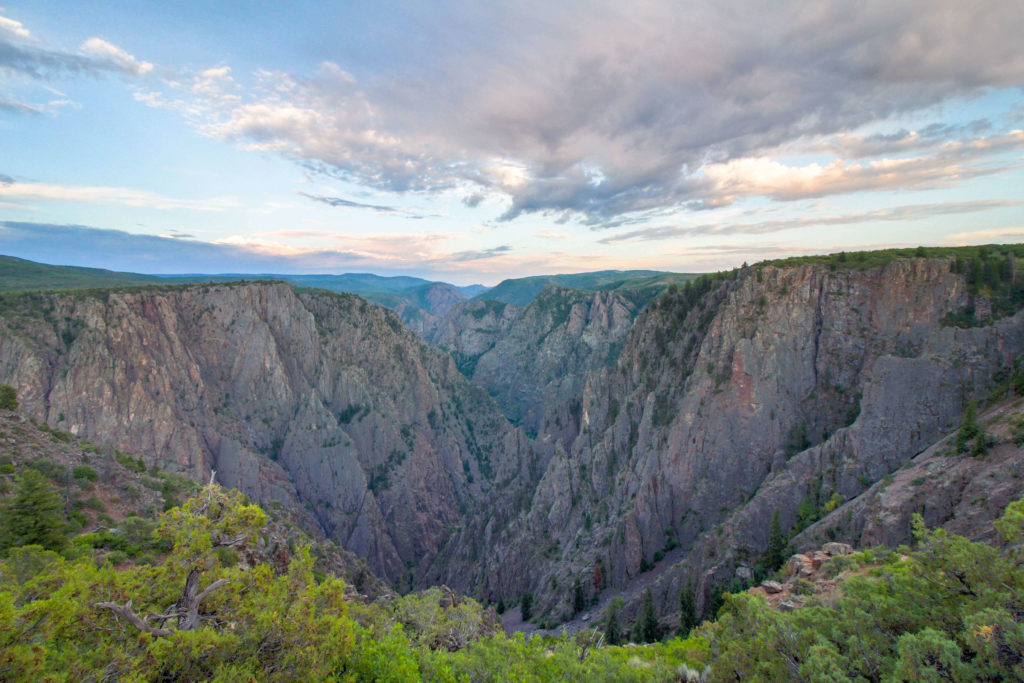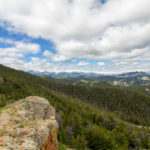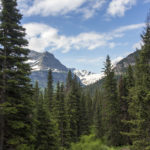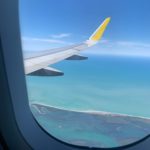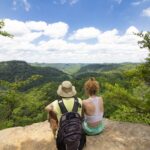Colorado’s diverse, colorful landscapes never fail to leave me in awe. From jaded Rocky Mountain peaks, to vibrant red rock, to the tallest sand dunes in North America, Colorado has so much to offer. Yet the unique Black Canyon of the Gunnison National Park is all too often overlooked by travelers. One of the least visited national parks in the U.S., this hidden Colorado gem is not to be missed!
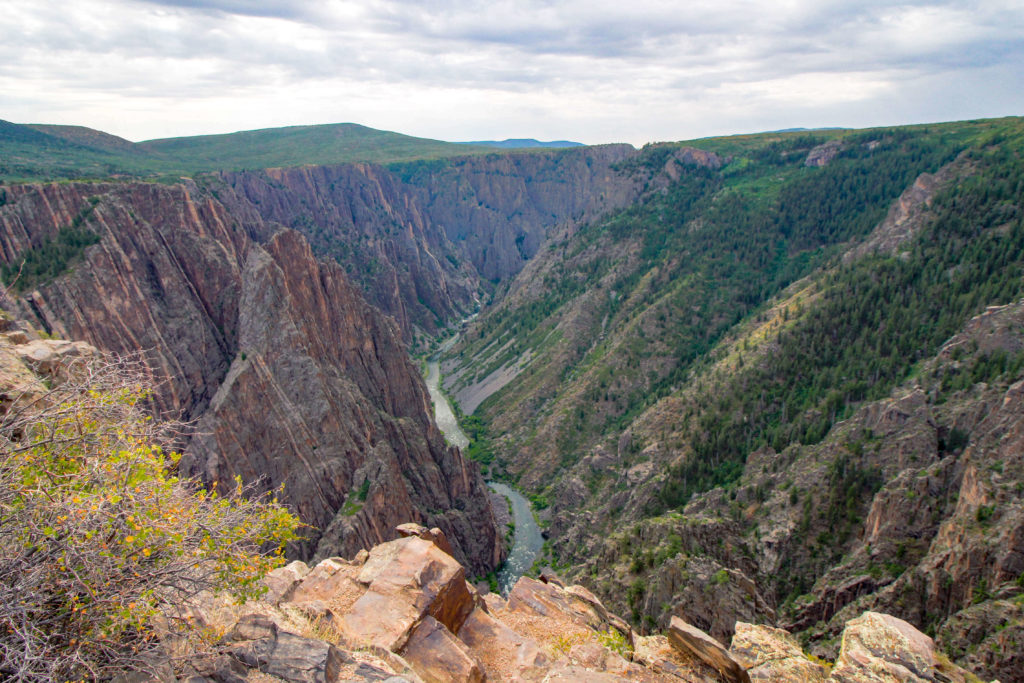
History of Black Canyon of the Gunnison National Park
Discovered in 1849 by Captain John W. Gunnison, the canyon was initially deemed impassable. In 1881, the Denver and Rio Grande Railroad created “Scenic Line of the World” that traveled through the canyon but by 1955, this track was abandoned. Black Canyon of the Gunnison National Park was established on October 21, 1999.
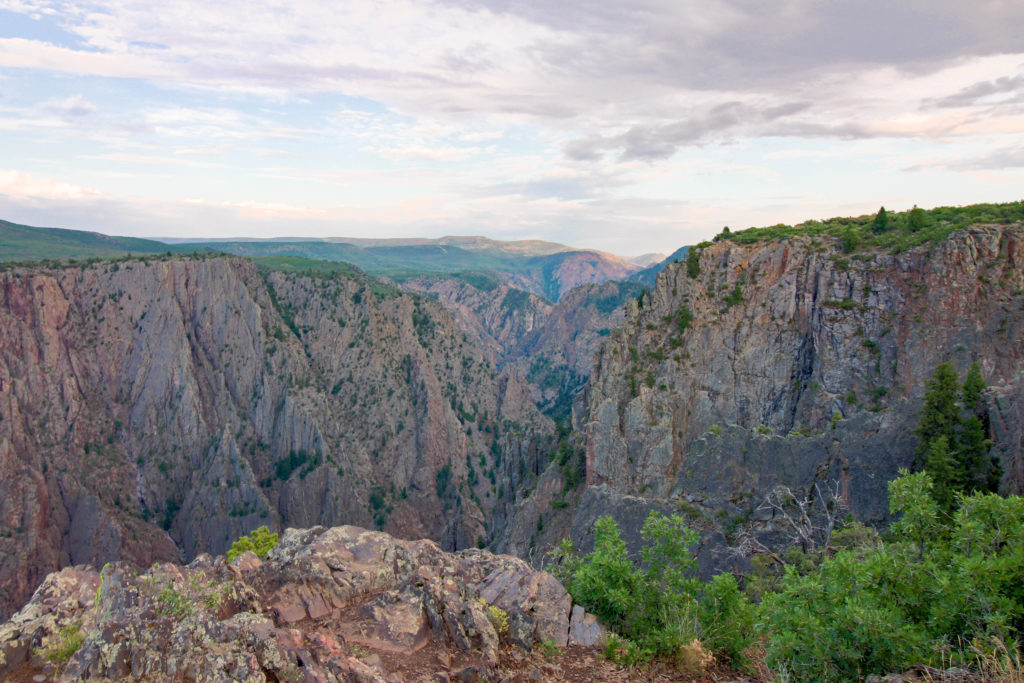
What You Need to Know About Black Canyon of the Gunnison National Park Before Visiting
Location:
102 Elk Creek
Gunnison, CO 81230
Phone:
(970) 641-2337
Website:
nps.gov/blca
Size:
30,750 acres
Annual Visitors:
209,000
Park Hours:
All day, everyday
Certain sections of the park are closed during winter.
Entrance Fee:
$15/vehicle, $7/individual
*side note: Mitch and I buy an annual national park pass every year (America the Beautiful Pass) for $80. This pass allows you to enter any national park in the United States for free and also includes day-use fees for other locations. This pass pays for itself within a couple of visits. I recommend this if you visit national parks frequently.
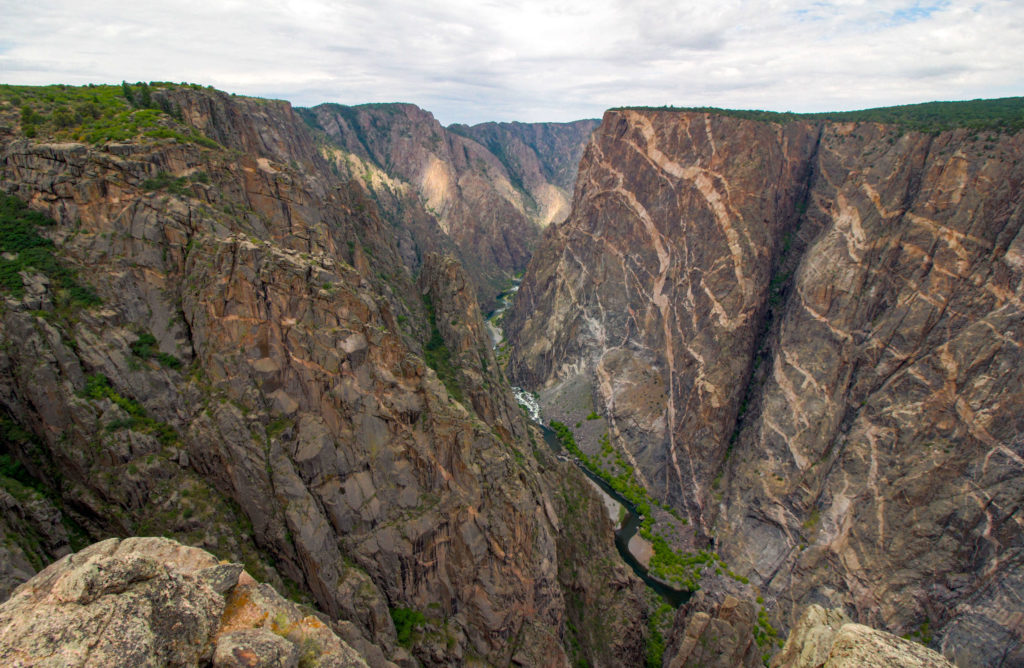
When to Visit
Peak season for this park is during the summer but since this park has minimal crowds, this can still be a great time for visiting. The North Rim, South Rim Road and East Portal Road are closed during the winter (typically mid-November through April).
Entering and Traveling Through Black Canyon of the Gunnison
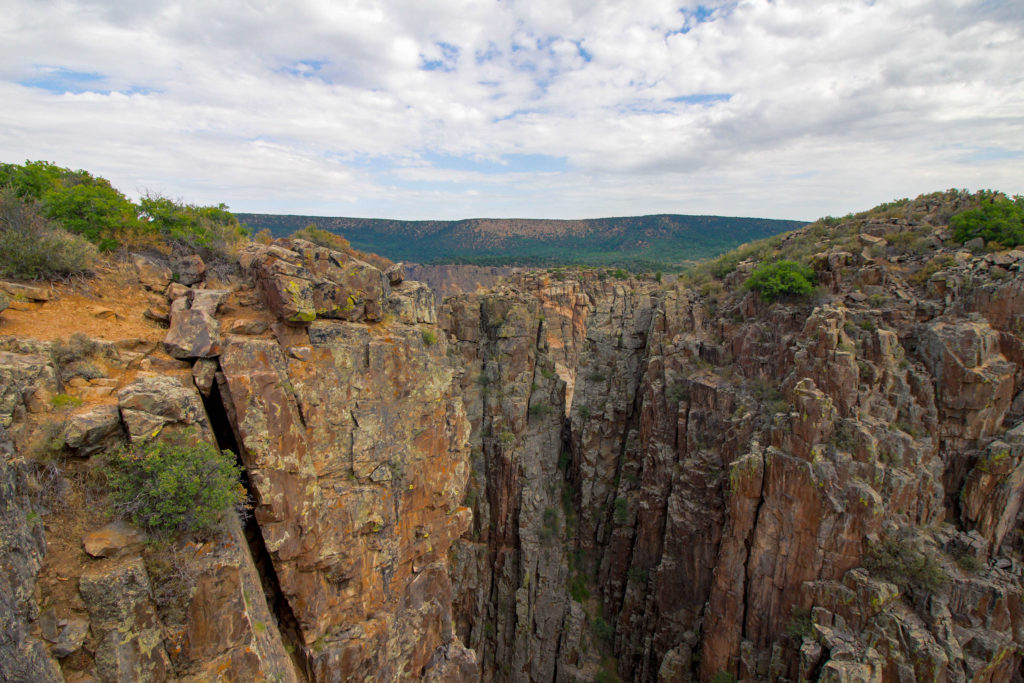
What to Do
Hiking: There are short and easy hikes with epic viewpoints located along South and North Rim Roads. Inside the canyon, there are strenuous hikes for the more experienced explorer.
- South Rim: There are 5 different trails along the South Rim including Rim Rock (1 mi), Uplands (1 mi), Oak Flat Loop (2.0 mi), Cedar Point (.7 mi) and Warner Point (1.5 mi).
- North Rim: The North Rim has 3 trails, Chasm View (.3 mi), North Vista (3.0 mi, 7.0 mi) and Deadhorse (5 mi).
- Inner Canyon (wilderness permit required): Inside the canyon, there are 7 mild-strenuous hikes, Tomichi Route (2 mi), Gunnison Route (2 mi), Warner Route (5.5 mi), S.O.B. Draw (3.5 mi), Slide Draw (2 mi), Long Draw (2 mi) and Red Rock Canyon (6.8 mi)
Backpacking: Explore untouched Colorado wilderness. Obtain a free wilderness permit to hike off-trail.
Wildlife Viewing: Black Canyon of the Gunnison is home to many different species of wildlife including black bears, mule deer and more. Peregrine falcons are known to nest on the canyon walls. Visit during the spring or fall for your best chance at seeing bears. Always remember to be respectful of wildlife and keep a safe distance.
Kayaking: Kayaking the wild Gunnison River is only recommended for expert kayakers. If you plan on paddling, you must obtain a wilderness permit.
Photography: With many easily accessible overlooks throughout the park, there are many opportunities to capture some stunning landscape shots.
Rock Climbing: For experienced climbers, Black Canyon’s cliffs can be a thrilling way to experience the park. All climbers must obtain a wilderness permit.
Biking: Biking is allowed on all paved roadways.
Snowshoeing/Cross Country Skiing: If visiting during the winter, snowshoeing can be a fun, kid-friendly activity. Cross Country skiing is also available during the winter.
Ranger Programs: Free ranger programs are offered that include a variety of activities and discussions. Stargazing programs are offered during the summer. Even occasional programs are held during the winter.
Tours: You can take a boat tour into the Canyon at Curecanti National Recreation area.
Festival: The annual Black Canyon Astronomy Festival offers events like solar viewing and astronomy activities during the day and ranger talks, guest speaker programs, and telescope viewing at night.
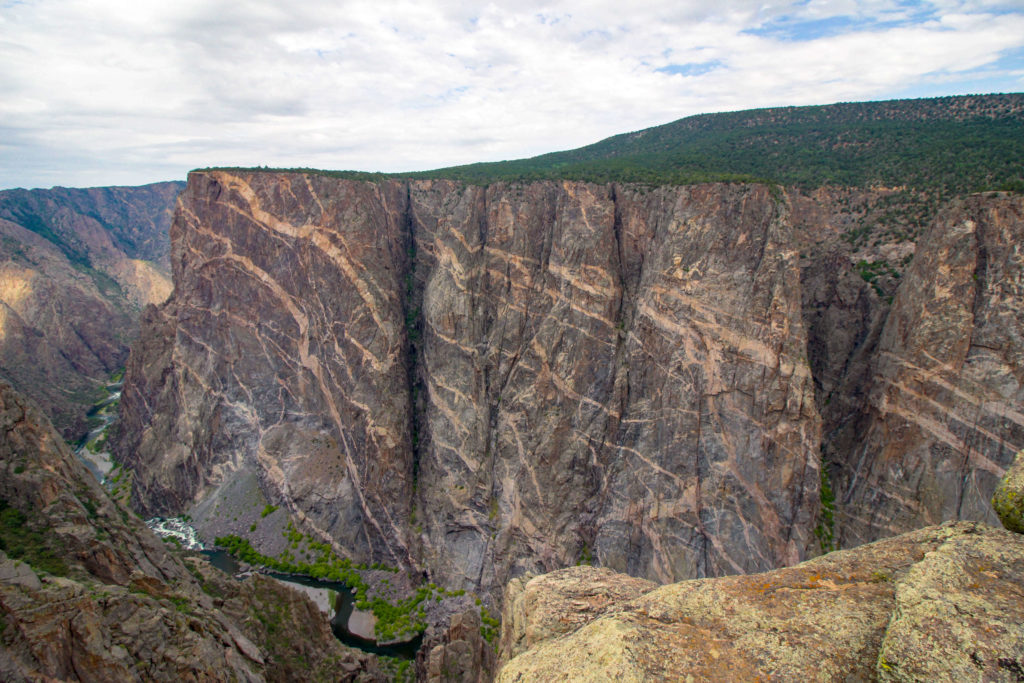
Where to Stay
Camping: There are two campgrounds in Black Canyon of the Gunnison.
- South Rim Campground: 88 campsites are divided into 3 different loops. Loop A and B can be reserved and Loop C campsites are available on a first-come, first-served basis.
- North Rim Campground: Available spring to fall, there are 13 campsites available on a first-come, first-served basis.
Lodging: There is no lodging inside of the park.
Pets
Pets are allowed on roads, in campgrounds, at overlooks and on certain trails like Rim Rock Trail, Cedar Point Nature Trail, and North Rim Chasm View Nature Trail. Pets must be kept on a leash no longer than six feet at all times. Please never leave your pets unattended.
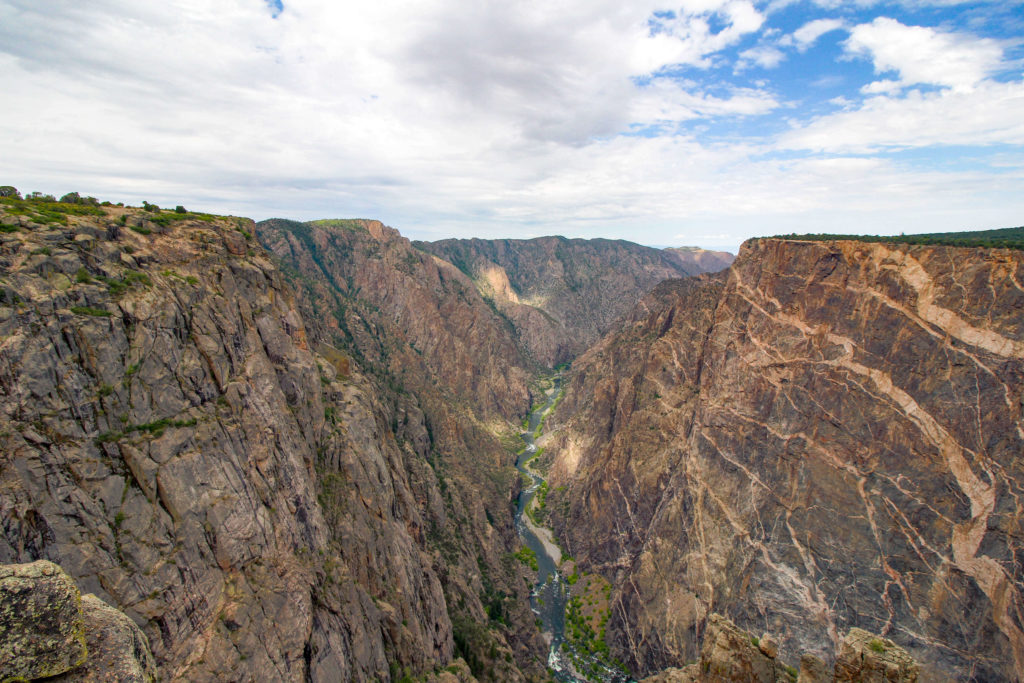
Amenities
Visitor Center: The South Rim Visitor Center is located 7 miles north on CO-347 from the intersection with US-50. It’s open every day except for Thanksgiving and Christmas Day. Hours vary depending on the time of year.
Picnic Areas: There are picnic areas scattered throughout the park. There are even some at scenic overlooks like Sunset View, High Point and Pulpit Rock.
Accessibility: On the South Rim, South Rim Visitor Center, all restrooms, Tomichi Point, Chasm View, and Sunset View are all accessible to those who are mobility impaired. There are also two accessible campsites at South Rim Campground. On the North Rim, Balanced Rock Overlook and a restroom at North Rim Ranger Station are accessible.
Amphitheater: Some evening ranger programs are help at the amphitheater.
Restrooms: Pit toilets are located throughout the park.
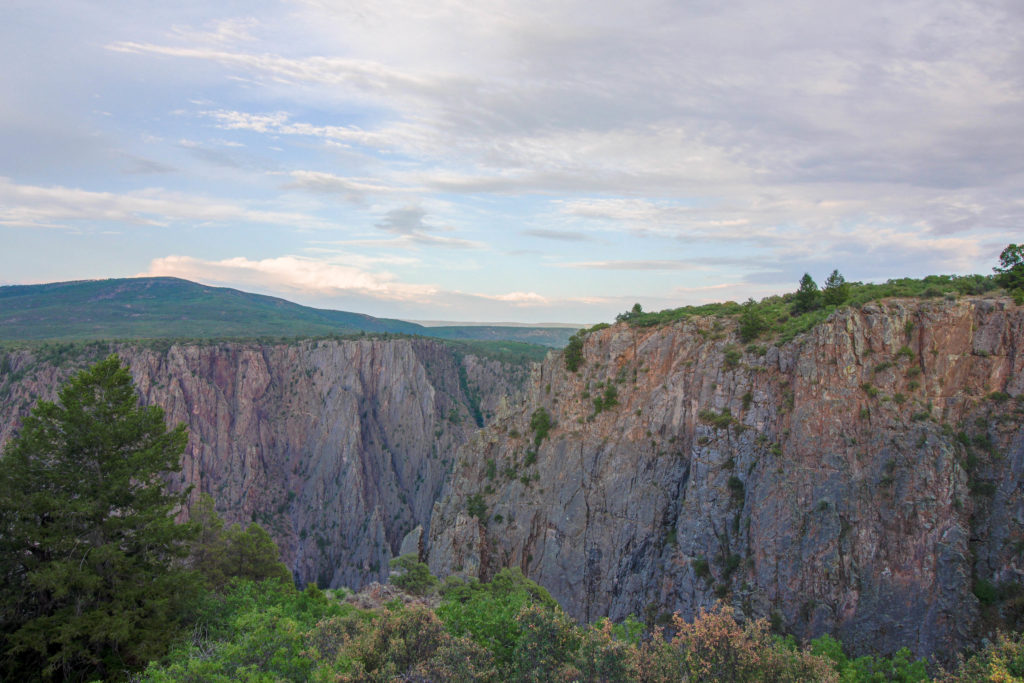
Safety
Fire: All fires are prohibited. I’ve personally seen rangers have to ask people to put out their campfire because they didn’t know that campfires weren’t allowed. When camping in a new area, always be updated and informed on the rules and regulations. They are meant to keep you and others safe as well as preserving the ecosystem around you.
Wildlife: As with any national park or natural area, it is important to be educated on the animals that reside there and how to prevent negative interactions with them. Remember that we are in their home. View all wildlife from a distance. Please do not approach, disrupt or feed wildlife. While hiking in bear country, always make a considerable amount of noise (talking loudly, clapping, etc.) to avoid startling them. It’s unlikely you’ll have an encounter with black bears or mountain lions but in case you do, it’s important to know what to do. Keep in mind that most animals will try to avoid confrontation so always leave them a way to escape.
- Black bears: If you happen to come across a black bear, it’s important to stay calm. If the bear isn’t aware of you, do not surprise them. Speak calmly and firmly to the bear. Don’t make any loud noises or scream. Back away slowly and don’t turn your back or run. If you’re with children, pick them up or hold on to them. You can read the National Park Service’s guide on hiking in bear country here. Storing your food properly is another important aspect of bear safety. Campsites have bear-proof boxes for you to store food and bear-proof garbage cans. In order to prevent bears from seeing humans as a potential source of food, it’s critical to store and dispose of your food responsibly and always follow the bear safety food regulations set by the National Park Service.
- Mountain lions: Mountain lions are solitary creatures that rarely attack humans but should always be considered as potentially dangerous. If you encounter a mountain lion, make direct eye contact and hold your ground or slowly back away without turning your back or running. Do everything you can to appear larger. If you’re with small children or pets, try to pick them up without turning away or bending over.
Water: Never wade in water other than in specified swimming areas. Even if it looks safe to you, currents can be deceiving.
Overlooks: Make sure to keep children close and dogs on a leash at all times. Some overlooks lack guardrails and the canyon edges can be dangerous due to weathered rock. Never throw anything into the canyon from the rim. Even a small stone could be fatal to hikers or rock climbers below.
Altitude: The rim of the canyon sits at an altitude of 8,000 feet above sea level. Take the necessary time and precautions to get adjusted to higher altitudes. Drink lots of water and listen to your body.
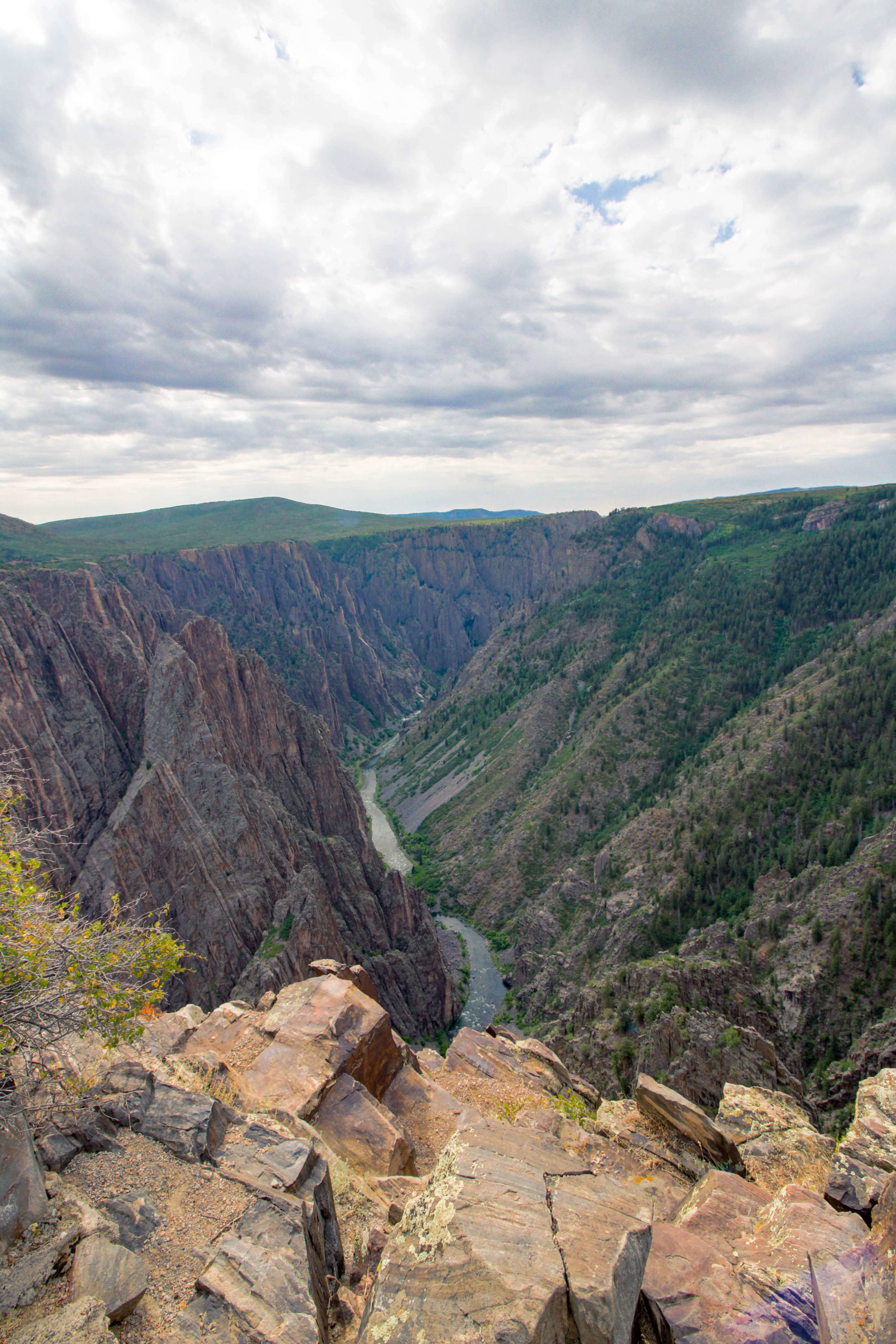
Leave No Trace
Please be respectful of nature and follow the Leave No Trace Principles. It is important to always stay on trails to avoid destroying fragile ecosystems. Take nothing but pictures, leave nothing but footprints.


